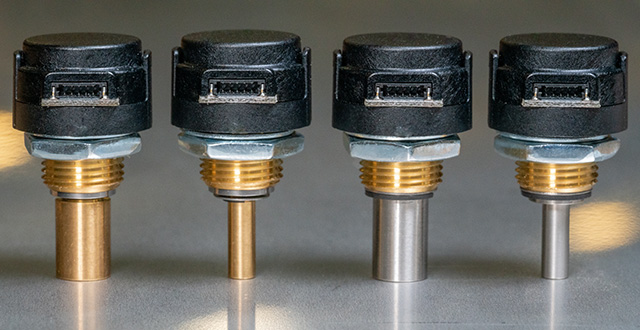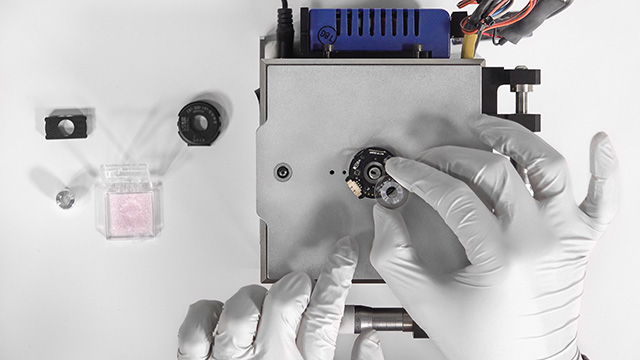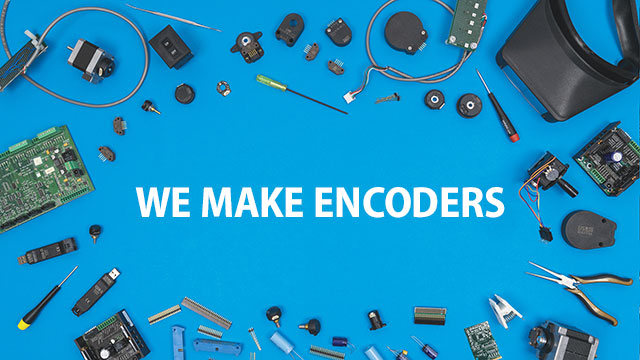Frequently Asked Questions
Get the answers to commonly asked questions about US Digital products and accessories. If the answer to your question is not listed below, contact our Technical Support team at 360.397.9999 or support@usdigital.com.
General
What is an encoder?
An encoder is a sensor that translates either rotary or linear mechanical motion into electrical signals so that a control system can determine the speed, acceleration, and/or position of a mechanical system.
Resolution
What are the minimum and maximum resolutions available with US Digital encoder modules?
Incremental encoder resolution is defined in Cycles Per Revolution (CPR) for rotary systems or Cycles Per Inch (CPI) for linear systems. Each incremental cycle can be further resolved by 2 or 4 times using Quadrature Detection techniques. For example, a 1000 CPR rotary encoder can resolve either 2000 or 4000 positions or pulses per revolution (PPR).
For 1" diameter disks, CPR values range from 32 to 5000 using the EM1 and EM2 encoder modules.
For 2" diameter disks, CPR values range from 64 to 10000 using the EM1 and EM2 encoder modules.
For linear strips, CPI values range from 120 to 2000 using the EM1 and EM2 encoder modules.
Mounting
What is meant by "artwork side of encoder disk?"
US Digital's optical encoder disks and linear strips are fabricated from Mylar film that is nominally 0.007" thick. The Mylar film has two sides; only one side of the film has the encoder disk pattern, which is referred to as the artwork side of the disk. The artwork side is the top of the disk when viewing the inscription correct read up.
What is TIR?
TIR is the Total Indicted Runout of an object as it turns on an axis in a complete rotation. With a rotary optical encoder, the TIR of the Disk pattern, as it is rotated one revolution, is an important value used to calculate the positional accuracy of the encoder signals. TIR is a cyclic value that does not accumulate over multiple rotations.
Reliability
Will US Digital encoders work in a vacuum?
Our encoders have not been tested in a vacuum. We believe the encoders will perform just fine in this environment. Regardless, it would be best if you verified this with your own tests.
Will US Digital encoders work in a radioactive environment?
Our encoders have not been tested in a radioactive environment. We believe the encoders will perform just fine in this environment. Regardless, it would be best if you verified this with your own tests.
How well do US Digital encoders work in a dusty environment?
US Digital encoders are fairly robust to dusty environments. The encoders look at multiple sets of window and bar pairs. Thus a speck of dust at any one window will be averaged by the other sets of windows and bars. Because of this averaging effect, several windows can be covered completely, and the module will still not lose a count. The phased array differential modules that read the disks have plenty of signal margin. An impressive demonstration of this is to color the disk completely black with a Sharpie pen. The encoder will continue to work without errors.
What solvents can be used to clean in the vicinity of the encoder modules?
US Digital has found that almost all solvents (besides water) will attack some of the encoder module parts. This includes alcohol and freon-based cleaners. US Digital has not qualified any solvent to be compatible with the encoder modules.
Electrical
I am trying to drive a fairly long length of cable. What kind of additional circuitry should I consider?
A long cable distance typically requires a differential line driver and differential line receiver to transmit digital signals reliably. Most US Digital encoders have an optional differential output circuit option (line driver) selected during part number configuration. If the US Digital encoder does not offer a differential output option, you can select an EA Incremental Encoder Adapter to provide a differential interface.
I am having some problems with noise affecting my encoder signals. What should I do?
Maximum electrical noise immunity is achieved using differential line driver outputs and receivers along with twisted pair shielded cable assemblies. Each encoder differential output pair should use the same twisted pair in the cable assembly. Routing encoder communication cables away from electrical noise sources such as motor leads will also minimize exposure to noise sources.
Can I use another voltage with US Digital encoders besides the standard 5VDC?
If the supply voltage is 7.5 to 30 VDC, the EA-D-L- high voltage cable driver can be used to generate 5VDC to power the encoder. This driver also converts the output swing of the encoder's A/B/Index channels to a voltage that is typically 2V less than the higher power supply voltage.
Another option is the PC3 open-collector cable driver. This driver is powered by 9.5 to 32VDC and generates 5VDC to power the encoder. The A/B/Index encoder channels are converted to open collector outputs that can swing to the voltage connected to external pull-up resistors.
Jump to...


